Admiral Richard E. Byrd: On Behalf of Humanity
Richard Evelyn Byrd (25 October 1888–11 March 1957), aviator and recipient of the Medal of Honor, was born in Winchester, the son of Richard Evelyn Byrd (1860–1925) and Eleanor Bolling Flood Byrd. His elder brother, Harry Flood Byrd (1887–1966), served as governor of Virginia and as United States senator, and his younger brother, Thomas Bolling Byrd, was an attorney and orchardist. Dick Byrd, as he was usually known, received his early education at Shenandoah Valley Academy. He manifested his love of travel and adventure at the age of twelve or thirteen when he traveled alone to visit a family friend in the Philippines. Byrd continued his education at the Virginia Military Institute (1904–1906), the University of Virginia (1907–1908), and the United States Naval Academy (1908–1912). He was a fine athlete but not an outstanding student.
Naval Officer
On 20 January 1915 the handsome, slender young naval officer married Marie Donaldson Ames, a wealthy Boston heiress he had met during her frequent childhood visits to Virginia. They lived in Boston and had one son and three daughters. Byrd retired from the navy in 1916 with the rank of ensign after he was declared physically unsuitable for promotion because of a fragile foot that he had broken several times. Although on the navy's permanently retired list, he returned to active duty for World War I and was promoted to lieutenant junior grade retroactive to his previous service. All of his subsequent promotions required acts of Congress. Byrd received flight training and won his wings on 17 April 1918. He never saw action, but he commanded air stations in Nova Scotia, helped the navy plan the first transatlantic flight, and developed a bubble sextant to aid in aerial navigation at sea. After the war Byrd played a key role in expanding the navy's aeronautical program, for which Congress promoted him to lieutenant commander.
Aviator
With further naval advancement unlikely, Byrd again left the service to become an independent aviation pioneer. He hoped to find wealthy patrons, make spectacular flights, and then earn fame and fortune by writing, lecturing, and selling the rights to his adventure stories. John D. Rockefeller Jr. and Edsel Ford were the major backers of his Arctic and early Antarctic ventures.
Antarctic Expeditions
In 1928 Byrd mounted the first Antarctic aviation expedition, with the objective of flying over the South Pole. With two ships, three airplanes, forty-two men, and eighty-four sled dogs, he established a coastal base he called Little America. Byrd flew to the South Pole on 28–29 November 1929 as part of a four-man crew. The expedition discovered Marie Byrd Land, comparable in size to Alaska and named for the commander's wife, and two mountain ranges. It also conducted important scientific research and proved the efficacy of long-distance radio communications. Congress promoted Byrd to rear admiral, and on 21 June 1930 the commonwealth of Virginia awarded him a partially gilded sterling silver presentation sword.
In January 1934 Byrd returned to Little America with a larger expedition. The one-year project featured a larger scientific program and included eight motorized vehicles. While Byrd manned a solitary meteorological outpost 123 miles from Little America, he became so ill from carbon monoxide poisoning that a tractor party had to make an epic winter journey to rescue him. He never fully recovered from this ordeal.
Byrd started to form a third private Antarctic expedition but merged his enterprise with the new United States Antarctic Service. He led the expedition through its year in the Antarctic, from January 1940 to January 1941. During World War II Byrd served in several staff roles, his principal mission being to survey potential air bases in the Pacific, for which he was awarded the Legion of Merit and a Gold Star. After the war he headed two more navy expeditions, Operation Highjump in 1946 and Operation Deep Freeze in 1955, which established a permanent Antarctic base. Byrd was in the Antarctic only briefly during the postwar expeditions. Disdained by the regular navy because of his political promotions, Byrd had little independent authority in the government's expeditions and was little more than a figurehead in their later operations.
World Renown
Byrd became one of the most famous explorers of his generation. He publicized his adventures with many articles and four books: Skyward (1928), Little America: Aerial Exploration in the Antarctic, The Flight to the South Pole (1930), Discovery: The Story of the Second Byrd Antarctic Expedition (1935), and Alone (1938). His lecture tours were, however, never as profitable as he had anticipated.
In declining health after his postwar expeditions, Byrd received the Medal of Freedom a few weeks before his death. Richard Evelyn Byrd died of heart failure at his home in Boston on 11 March 1957 and was buried in Arlington National Cemetery.
-
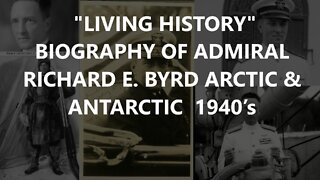 9:08
9:08
AmericanMediaEphemera
1 year ago"LIVING HISTORY" ADMIRAL RICHARD E. BYRD
576 -
 12:22
12:22
AmericanMediaEphemera
1 year ago1926 ADMIRAL RICHARD BYRD FLIES OVER NORTH POLE
449 -
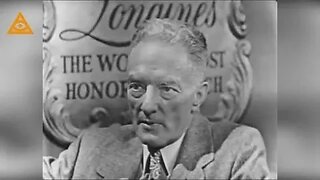 12:11
12:11
The New World Order
1 year agoAdmiral Richard E. Byrd: 1954 interview.
85 -
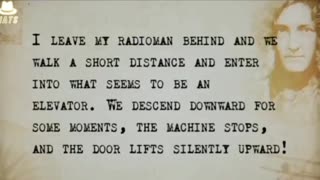 11:01
11:01
TeamTrumpCGN
11 months agoAdmiral E. Richard Byrd The stuff Mainstream Media hides from you!
2291 -
 1:53
1:53
Flight Risk News
8 months agoAdmiral Richard E Byrd the Mystery
98 -
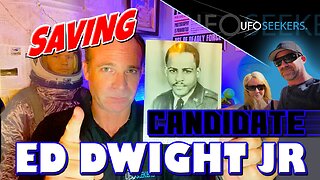 9:42
9:42
UFO Seekers ®
1 year ago1st AFRICAN AMERICAN Astronaut Candidate Selected in the United States - Captain Ed Dwight Jr.
85 -
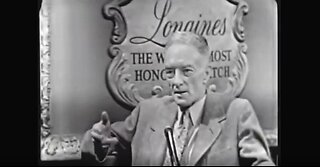 14:33
14:33
Truths Unlimited
1 year agoAdmiral Byrd in 1954 Talks of the Importance of Antartica & the Abundant Resources he Found
3.56K2 -
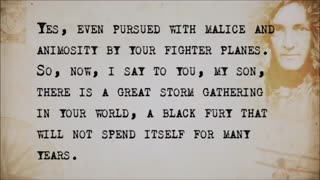 11:06
11:06
Time to Wake Up
1 year agoAdmiral Richard E Byrd's Lost Diary
308 -
![American Admiral Richard Byrd on the Secrets of Antarctica in the 60's! [19.12.2023]](https://hugh.cdn.rumble.cloud/s/s8/1/I/P/o/O/IPoOo.0kob-small-American-Admiral-Richard-By.jpg) 19:07
19:07
KimOsboel
6 months agoAmerican Admiral Richard Byrd on the Secrets of Antarctica in the 60's! [19.12.2023]
2.88K -
 0:42
0:42
zacharydenman
1 year agoAdmiral Richard E Byrd of the US Navy flew two missions to the Hollow Earth #hollowearth #conspiracy
75